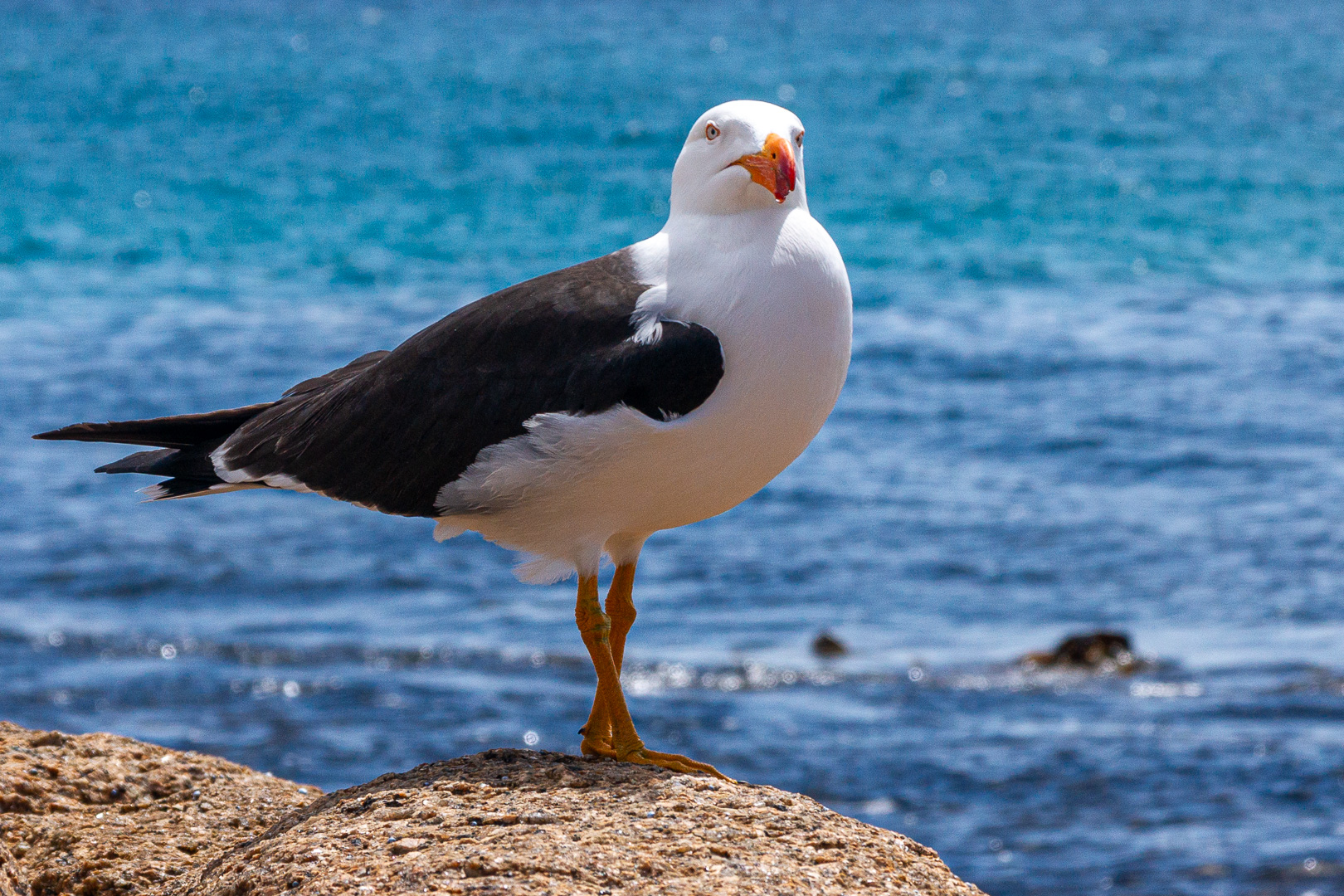Graham Harris

June 2025 - Pacific Gull Portrait
About the Image(s)
Captured this Pacific Gull in eastern Tasmania =under bright sunny connditions (hence the bright highlights on it’s head). Taken with a Sony A550 and a 10-300mm lens (focal length 135 mm) handheld. An ISO of 400 used - at 1/800s and F13, -1 exposure compensation used. Was moving around some coastal rocks when I came across this Pacific Gull eyeing me off. Image cropped to remove the horizon and bright sky and processed with Lightroom Classic (highlights reduced a little and shadows opened up).
This round’s discussion is now closed!
4 comments posted
Allen Kurth
Can you reduce the highlights a little more to get some detail in the top of the head? Posted: 06/11/2025 13:17:41
James Nelson
I see what looks like color noise on the white areas of the body and breast. Surprising given the bright conditions and the camera settings. May bbe due to cropping. Technicaaly nice image but fairly static as a competition entry. Posted: 06/17/2025 15:49:06
(Group 3)
What works here: The bird is facing the viewer, the eye is sharp, and your crop is about the best you can do with the subject.
Take my additional comments as you will, and it will depend on what you plan to do with the image. For example, if this gull is rare in that part of the world, it's a fabulous shot to share with your local birding community.
But for competition, there are a few reasons why this image won't work. Part of it is the loss of detail in both the blacks and white, and the color noise mentioned by James - I suspect that is a result of fairly extreme work on the Shadows. Programs such as Topaz can help to some extent, but they typically introduce artifacts of their own in the process. You already know that midday shooting isn't ideal for birds or almost anything actually. And that goes double when you have a massive dynamic range in your shot. So this was essentially an impossible image as a single shot, and it's unlikely you could have bracketed without him moving a bit and losing sharpness in the combined image (always worth a try in similar circumstances though!)
The other problem is the nature of the image. This is the very definition of a portrait shot. The bird looks like a common bird, and it isn't doing anything to tell us a story about its life. (No, seeing water behind a water bird does not carry the shot.) In Nature competition, "the story factor must be considered above the pictorial elements," or something to that effect.
The one possible way out would be to convert it into Monochrome. It still won't carry in Nature, but it's just possible it might gain acceptances in Monochrome.
Lillian
Posted: 06/19/2025 16:04:31
Take my additional comments as you will, and it will depend on what you plan to do with the image. For example, if this gull is rare in that part of the world, it's a fabulous shot to share with your local birding community.
But for competition, there are a few reasons why this image won't work. Part of it is the loss of detail in both the blacks and white, and the color noise mentioned by James - I suspect that is a result of fairly extreme work on the Shadows. Programs such as Topaz can help to some extent, but they typically introduce artifacts of their own in the process. You already know that midday shooting isn't ideal for birds or almost anything actually. And that goes double when you have a massive dynamic range in your shot. So this was essentially an impossible image as a single shot, and it's unlikely you could have bracketed without him moving a bit and losing sharpness in the combined image (always worth a try in similar circumstances though!)
The other problem is the nature of the image. This is the very definition of a portrait shot. The bird looks like a common bird, and it isn't doing anything to tell us a story about its life. (No, seeing water behind a water bird does not carry the shot.) In Nature competition, "the story factor must be considered above the pictorial elements," or something to that effect.
The one possible way out would be to convert it into Monochrome. It still won't carry in Nature, but it's just possible it might gain acceptances in Monochrome.
Lillian
Posted: 06/19/2025 16:04:31
Hi Graham,
I agree with Lillian's comments above. If you are shooting a static bird with white parts, I'd shoot at the lowest ISO setting possible which would give you maybe 1/2 stop dynamic range on the top/bottom range. In this case you could have gone F8 to compensate for the lower ISO Posted: 06/25/2025 10:20:52
I agree with Lillian's comments above. If you are shooting a static bird with white parts, I'd shoot at the lowest ISO setting possible which would give you maybe 1/2 stop dynamic range on the top/bottom range. In this case you could have gone F8 to compensate for the lower ISO Posted: 06/25/2025 10:20:52